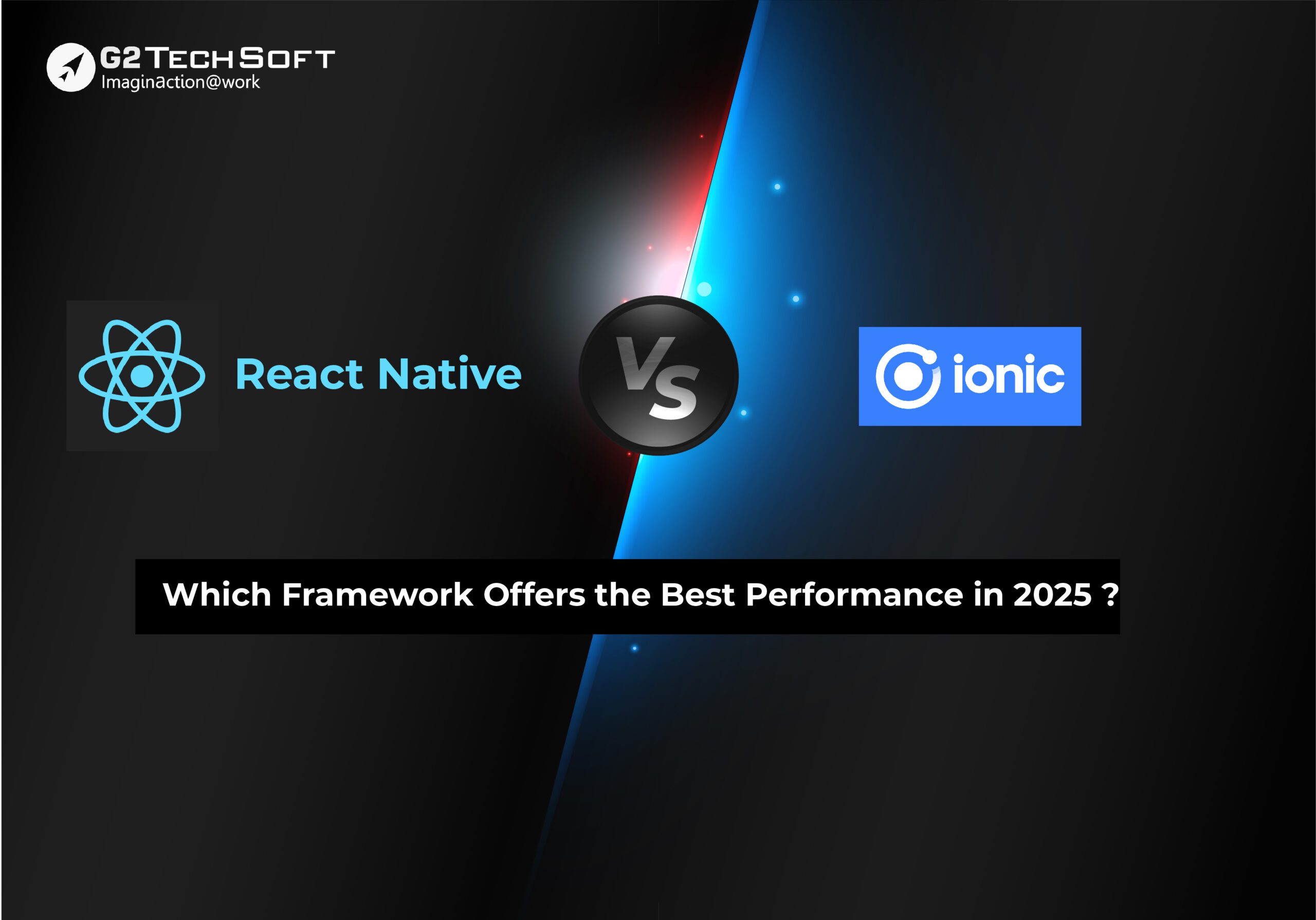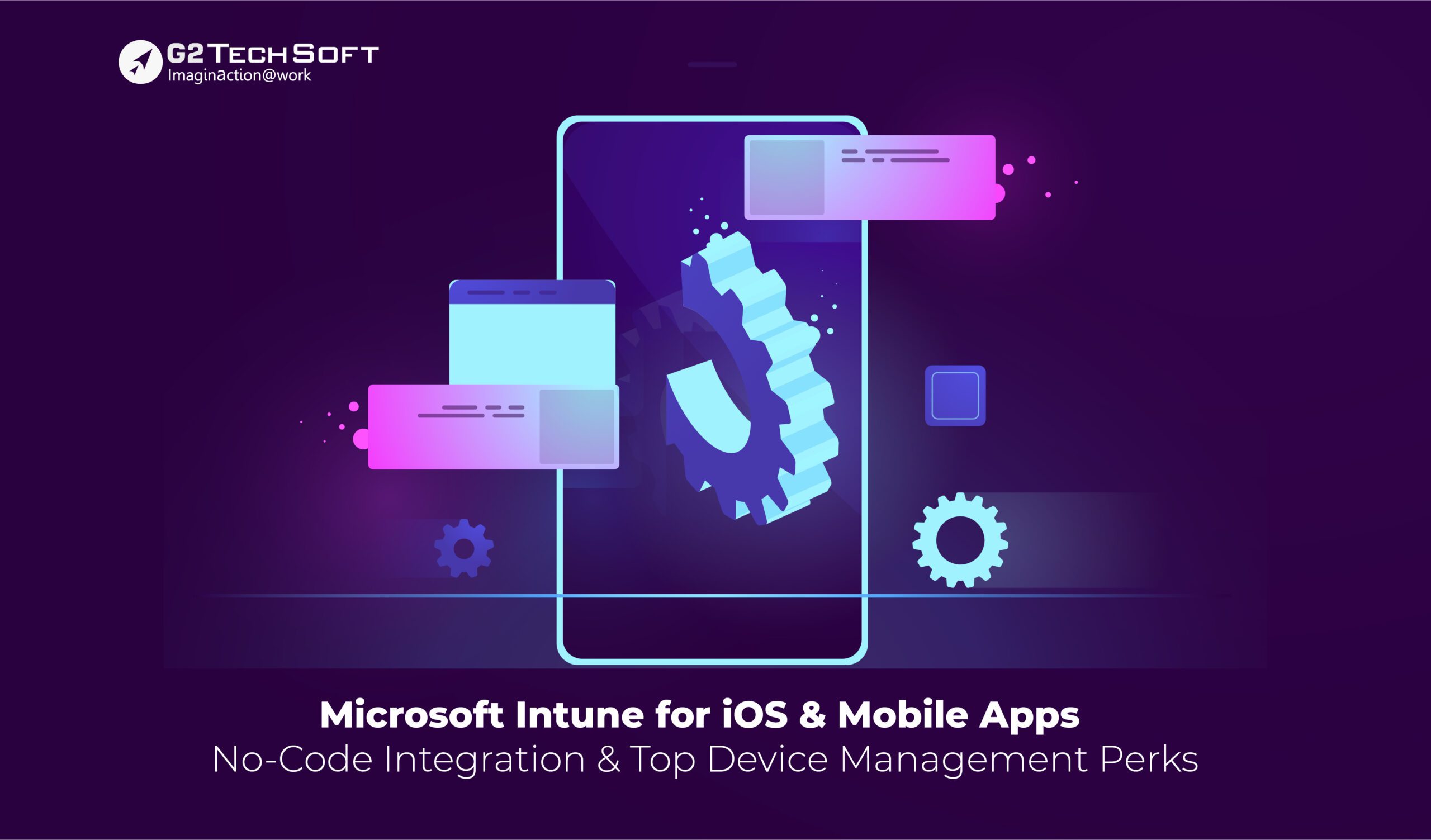
React Native Or Ionic: Which Framework Offers The Best Performance In 2025
Introduction:
In mobile app development, choosing the best mobile app framework can significantly impact the success of your project. Among many options, two frameworks stand out: the React Native Framework and the Ionic Framework.
As we look toward 2025, understanding these frameworks’ performance capabilities is crucial for developers and businesses alike.
An Overview:
React Native Framework:
Launched by Facebook in 2015, React Native has quickly gained popularity among developers for its ability to create high-quality mobile applications using JavaScript and React. The framework allows developers to write code once and deploy it across both iOS and Android platforms, significantly reducing development time and effort.
One of the pivotal features of React Native is its native components. Unlike traditional hybrid frameworks that render UI through WebView, React Native interacts directly with native APIs. This approach enables developers to build apps that feel truly native, offering smooth animations and fast load times.
Ionic Framework:
The Ionic Framework was introduced in 2013 as a hybrid mobile app development platform built on web technologies such as HTML, CSS, and JavaScript. Ionic allows developers to create cross-platform applications using a single codebase while leveraging web standards. It provides a library of pre-built UI components that can be easily customized to create visually appealing applications.
Ionic uses WebView to render applications, which means it operates within a browser-like environment on devices. While this approach simplifies development for web developers, it can sometimes lead to performance challenges compared to native solutions like React Native.
React Native Framework Performance:
React Native’s architecture allows it to deliver exceptional performance by utilizing native components. Here are some pivotal points regarding its performance:
- Native Rendering: Since React Native uses native components rather than web views, it provides a smoother user experience with faster rendering times. This is especially important for applications requiring complex animations or real-time data updates.
- Efficient Resource Management: React Native optimizes CPU usage during heavy operations by offloading tasks to native threads. This capability ensures that apps remain responsive even under load.
- Hot Reloading: One of React Native’s standout features is hot reloading, which allows developers to see changes in real-time without recompiling the entire application. This feature not only speeds up development but also helps maintain performance during iterative testing.
- Community Support: The active community around React Native continuously contributes to improving its performance through libraries and tools that enhance functionality and reduce overhead.
While React Native excels in many areas, it can face challenges related to third-party libraries or when integrating with complex native modules. Developers may need to invest time in optimizing these aspects for specific use cases.
Ionic Framework Performance:
Ionic’s performance characteristics differ due to its reliance on WebView for rendering applications.
- Web Technologies: By leveraging HTML5 and CSS3, Ionic allows developers familiar with web technologies to build mobile applications quickly. However, this approach can lead to slower performance compared to native-rendered apps.
- Rendering Latency: Since Ionic relies on WebView, older devices may experience latency issues during rendering or when executing complex animations. While modern devices handle this well, performance can vary based on hardware capabilities.
- Optimizations With Capacitor: With the introduction of Capacitor (Ionic’s official cross-platform runtime), developers can access native device features more effectively than before. The capacitor enhances performance by allowing direct calls to native APIs without needing extensive plugins.
- Responsive Design: Ionic’s focus on responsive design ensures that applications look good across various screen sizes and orientations. While this is beneficial for user experience, it may introduce additional overhead during rendering.
While Ionic performs well for simpler applications or content-driven platforms, it may not match the raw performance capabilities of React Native for more demanding projects.
Development Speed vs. Performance Trade-off:
When choosing between the React Native Framework and the Ionic Framework, one must consider the trade-off between development speed and application performance:
Development Speed With React Native:
- Learning Curve: Developers new to mobile development may face a steeper learning curve when working with React Native compared to Ionic.
- Complex Integrations: Integrating third-party libraries or custom native modules can add complexity and time to the development process.
- Testing Requirements: Testing across multiple platforms (iOS and Android) may require additional effort due to differences in behavior across devices.
Development Speed With Ionic:
- Familiarity With Web Technologies: Developers with a background in web development can quickly adapt to Ionic’s structure and start building apps without extensive training.
- Rapid Prototyping: The availability of pre-built UI components allows for quick prototyping and deployment of applications.
- Single Codebase: With a single codebase for multiple platforms, teams can save time on maintenance and updates.
Use Cases And Best Fit:
Understanding where each framework excels is essential for making an informed decision about which framework best suits your project requirements.
When To Choose The React Native Framework?
- High-Performance Applications: If your project requires high responsiveness, such as gaming apps or AR/VR experiences, React Native is likely the better choice due to its ability to deliver near-native performance.
- Complex User Interfaces: Applications that involve intricate animations or real-time data processing will benefit from React Native’s efficient rendering capabilities.
- Enterprise-Level Applications: For businesses looking for scalability and maintainability in their apps—especially those requiring frequent updates—React Native’s architecture supports these needs effectively.
- Team Expertise In Mobile Development: If your team has experience with mobile development or is willing to invest time in learning native concepts, React Native provides powerful tools for building sophisticated applications.
When To Choose The Ionic Framework?
- Content-Driven Applications: For apps focused primarily on content delivery, such as blogs or news platforms, Ionic’s web-based approach is sufficient and often more efficient.
- Rapid Prototyping Needs: If you need an MVP quickly or want to test market ideas without significant investment upfront, Ionic allows fast iterations.
- Web-Focused Teams: If your team consists mainly of web developers familiar with HTML/CSS/JavaScript but lacks mobile experience, Ionic offers an easier entry point into mobile app development.
- Simple Apps With Limited Resources: For projects where high-end performance isn’t critical—like informational apps or simple tools—Ionic provides a cost-effective solution without sacrificing too much quality.
React Native Or Ionic: Best Performance Framework In 2025
As we look ahead toward 2025, both are best performance mobile app frameworks.
The future looks promising for the React Native Framework as Meta continues investing in its development.
- Enhanced Performance Features: Future releases are expected to focus on improving performance further by optimizing rendering processes and reducing startup times.
- Broader Community Support: As more companies adopt React Native for their projects, community contributions will likely lead to an increase in libraries and tools that enhance functionality.
- Integration With Emerging Technologies: As technologies like augmented reality (AR) become more mainstream, React Native’s ability to integrate seamlessly with native APIs will position it well for future developments in this area.
The outlook for the Ionic Framework remains strong as well.
- Continued Emphasis On Web Standards: With ongoing advancements in web technologies (like WebAssembly), Ionic is well-positioned to leverage these innovations while maintaining compatibility across platforms.
- Increased Focus On Capacitor: The growth of Capacitor will likely enhance Ionic’s ability to access native features efficiently while simplifying integration processes.
- Adaptation Across Industries: As businesses increasingly recognize the value of hybrid solutions for rapid deployment without sacrificing quality, Ionic will continue gaining traction across various sectors.
Ultimately, both frameworks will adapt and evolve based on industry trends and developer needs over the next few years.
Conclusion:
Choosing between the React Native Framework and the Ionic Framework ultimately depends on your specific project requirements—whether you prioritize high-performance capabilities or rapid development cycles.
For applications demanding superior responsiveness and a native-like user experience—especially those involving complex interactions—React Native stands out as the best choice.
Conversely, if speed-to-market is paramount or if your application focuses primarily on content delivery without requiring extensive resources, then Ionic presents a compelling option.
At G2TechSoft, we understand that navigating these choices can be challenging amidst evolving technologies and market demands. Our team specializes in helping businesses identify their unique needs and select the most suitable framework for their projects—be it leveraging the high-performance capabilities of React Native or harnessing the rapid deployment advantages offered by Ionic.



